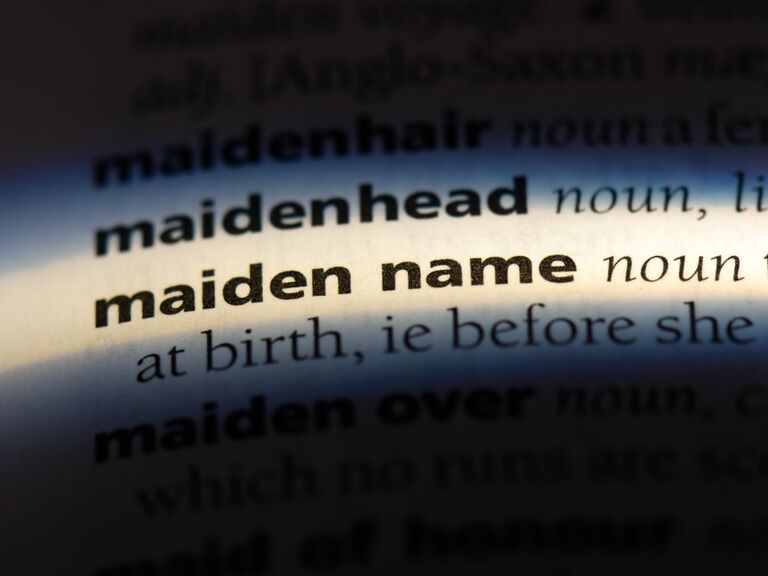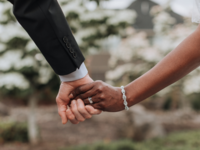What Is a Maiden Name and Why Some People Change It After Marriage

While many people keep their last names for their entire life, those who get married may opt to have a name change to reflect their new family unit. Traditionally, the name that is dropped is the woman's maiden name. So, what is a maiden name? This is the last name that someone—usually a woman—is given by her family at birth that belongs to one or both of their parents. After getting married, they can keep their maiden name, adopt their spouse's surname or choose a new name to share with their spouse.
Want to learn more about maiden names? Ahead, we break down everything you need to know about a maiden name's meaning and why it is sometimes changed when couples tie the knot.
In this article:
- What is a Maiden Name?
- Why Do Women Traditionally Change Their Last Name?
- Do You Have to Change Your Maiden Name?
What is a Maiden Name?
According to Merriam-Webster, a maiden name is the surname prior to the marriage of a person who takes their spouse's last name. It is more commonly used to denote the surname of a married or divorced woman prior to marriage. If someone chooses to give up their maiden name at marriage, they would decide to take on a new married name that they can share with their spouse. This process of changing your name in the United States requires filling out forms to file with the government so they are able to change your name on official records and documents like your driver's license, social security card and passport.
Why Do Women Traditionally Change Their Last Name?
While most women traditionally changed their last names when they got married in the past, it's not as ubiquitous of a practice today. Quite a few women choose to keep their maiden name for personal or professional reasons. However, the reason most women take on the names of their husbands is due to the patrilineal family lines and wedding traditions in the Western world.
It has been a common practice that children take the name of their father when they are born and women take the name of their husbands when they get married. This practice of naming also has ties to earlier eras where women were seen as the property of their fathers and husbands. Once they left the home of their father, they would take on the name of their husband as she entered into his family.
As we have moved into a more egalitarian, feminist society with marriage available to LGBTQIA+ individuals as well, these practices have changed for many couples. While it is still common for women to change their maiden names after marriage, there are ways to still maintain your maiden name in your post-nuptial life. Some people choose to turn their maiden name into their middle name. Others will create something entirely new.
Do You Have to Change Your Maiden Name?
Changing your name after marriage is not a required part of getting married in modern times. Many women, men and non-binary folks decide to keep their maiden names once they tie the knot as they feel an inherent connection to that family lineage in their name or they don't believe in older patriarchal traditions. Plus, since there is no tradition for LGBTQIA+ marriage name change, these newly married pairs will usually find a different solution for their last name.
Quite a few married couples—LGBTQIA+ or not—now choose to hyphenate their two last names after marriage so they both show their personal and family background within their titles. If someone has a good amount of name recognition in their professional life, this can also be a solution where people still maintain some familiarity with their name. Hyphenating a last name also allows couples to have their children take both of their maiden names and carry on their family identity. Hyphenated names for children are also helpful in the case of divorce. If someone chooses to go back to their maiden name after separation, they will still partially share a last name with their child.
Other couples decide to create an entirely new married last name for themselves. Some people decide to combine elements of their maiden names together to create a new, hybrid word. Others will work with their partner to choose an entirely new last name to define their family after marriage.
If you decide to hyphenate or create a new last name, you and your partner will need to complete a legal process to change your names. While the process of changing a maiden name does require some work, many couples love being able to share a name with their new spouse.























